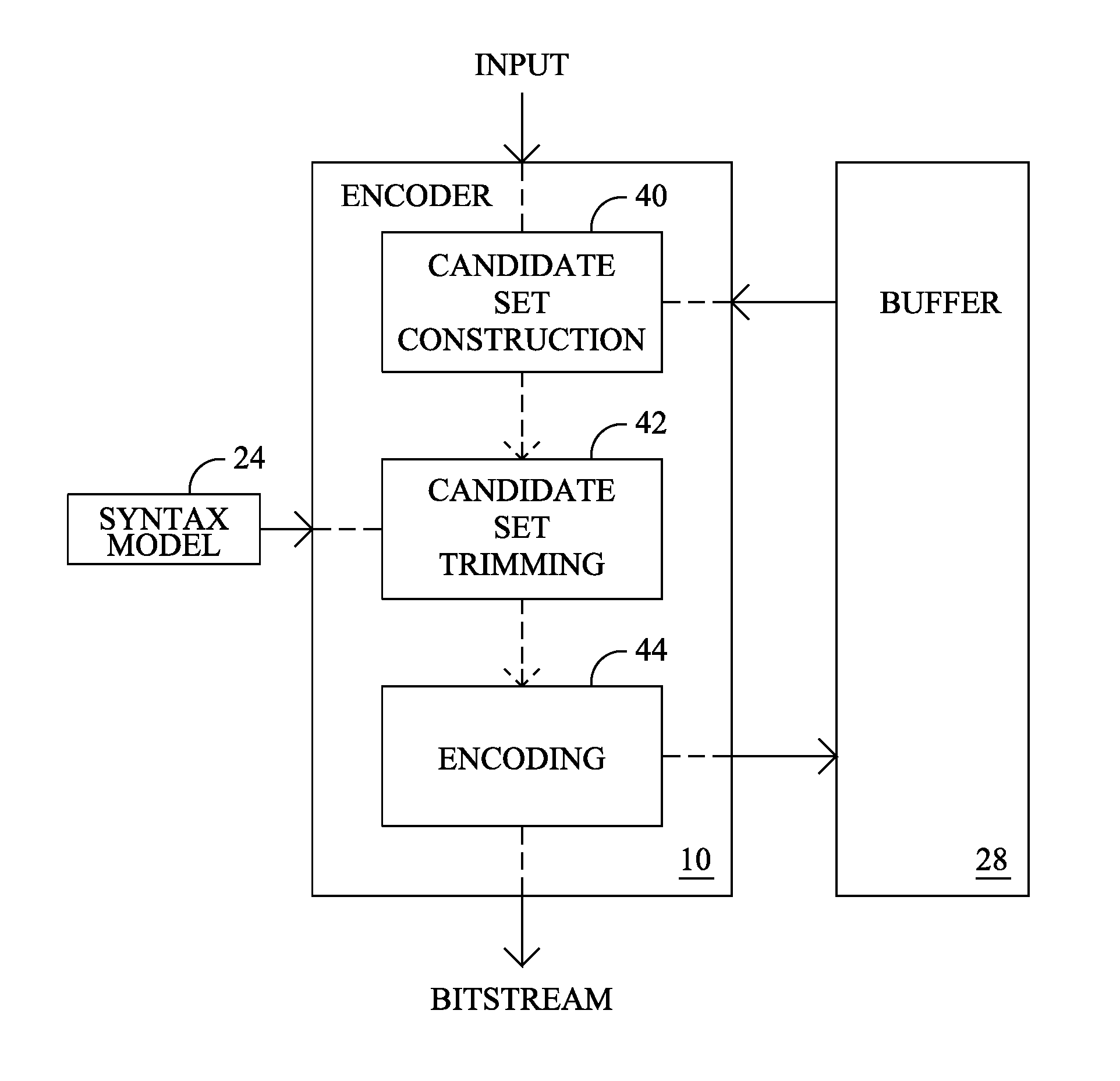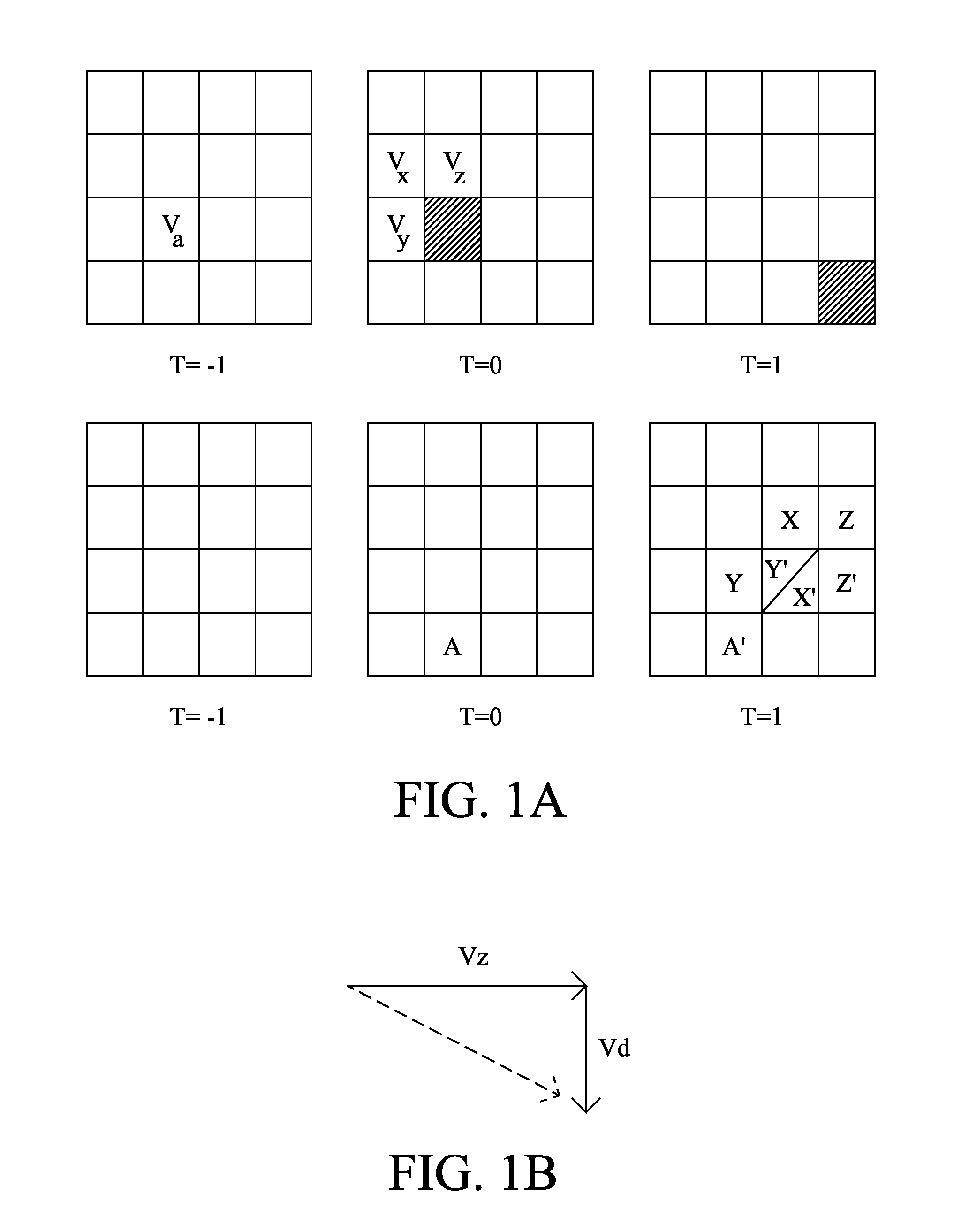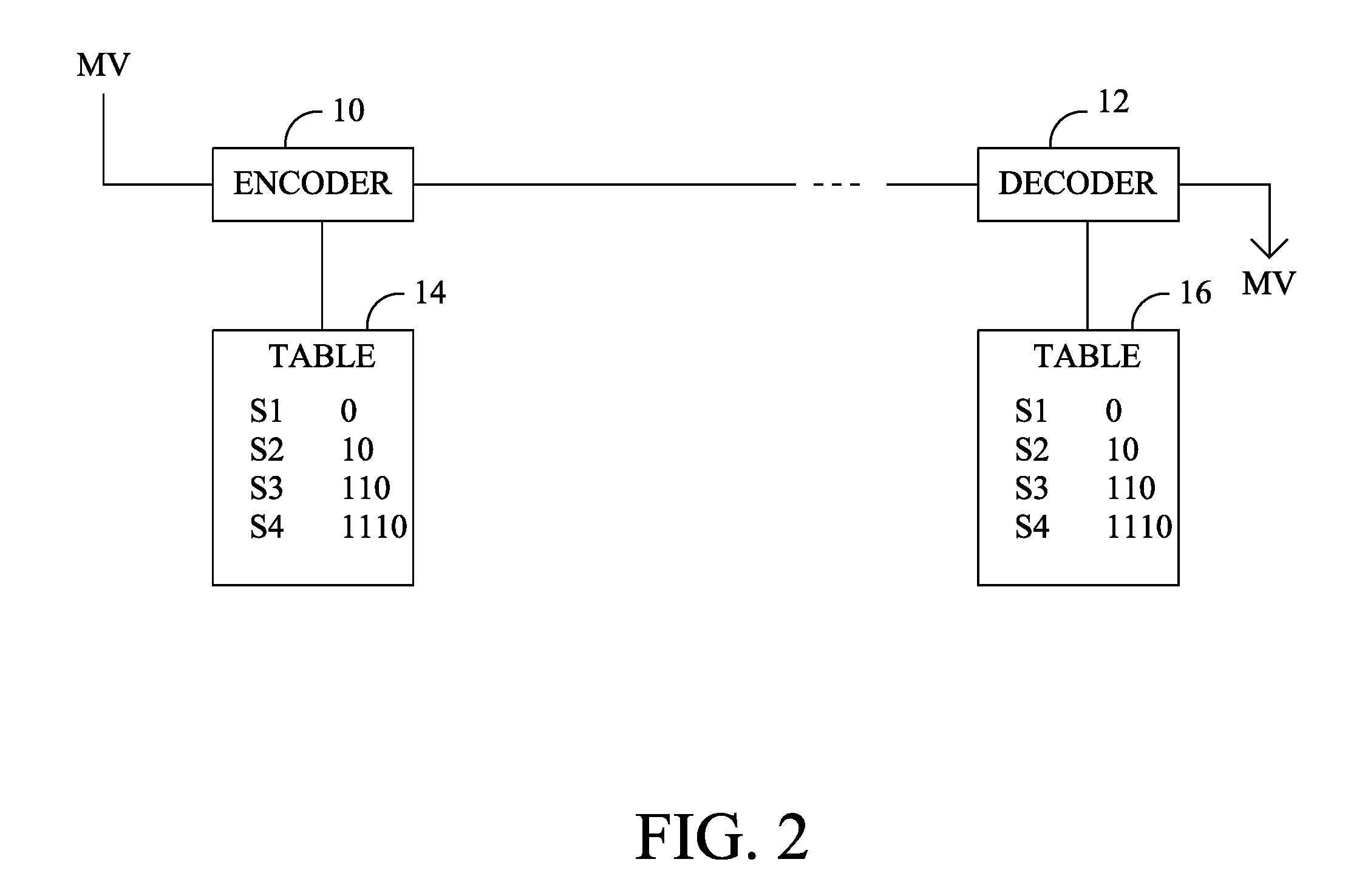System for nested entropy encoding
a technology of entropy and encoding, applied in the field of nested entropy encoding, can solve the problem that the necessary bit rate to preserve a desired quality is often too high for the transmission medium, and achieves the effect of preserving the desired quality and avoiding the transmission medium
- Summary
- Abstract
- Description
- Claims
- Application Information
AI Technical Summary
Problems solved by technology
Method used
Image
Examples
Embodiment Construction
[0017]Referring to FIGS. 1A and 1B, a motion vector for a candidate block (shown in cross-hatch) in a current frame at T=0 points to the cross-hatched block in subsequent frame at t=1. This motion vector may be encoded with reference to a candidate set of motion vectors Va, Vx, Vy, and Vz. In this example, motion vector Va is a co-located motion vector in the preceding frame at t=−1 and points to block A in the current frame. Motion vectors VX, Vy, and Vz are previously-encoded motion vectors in the current frame and point to blocks X, Y, and Z, respectively, in the subsequent frame at T=1. FIG. 1A also shows the blocks A′, X′, Y′, and Z′ that the respective motion vectors would point to if used when encoding the candidate block.
[0018]As can be seen in FIG. 1B, using the motion vector competition (MVC) procedure, motion vector Vz would be selected to minimize the code length of the differential Vd, which in that instance, would only require a value of “1” in a single component (down...
PUM
 Login to View More
Login to View More Abstract
Description
Claims
Application Information
 Login to View More
Login to View More - R&D
- Intellectual Property
- Life Sciences
- Materials
- Tech Scout
- Unparalleled Data Quality
- Higher Quality Content
- 60% Fewer Hallucinations
Browse by: Latest US Patents, China's latest patents, Technical Efficacy Thesaurus, Application Domain, Technology Topic, Popular Technical Reports.
© 2025 PatSnap. All rights reserved.Legal|Privacy policy|Modern Slavery Act Transparency Statement|Sitemap|About US| Contact US: help@patsnap.com



